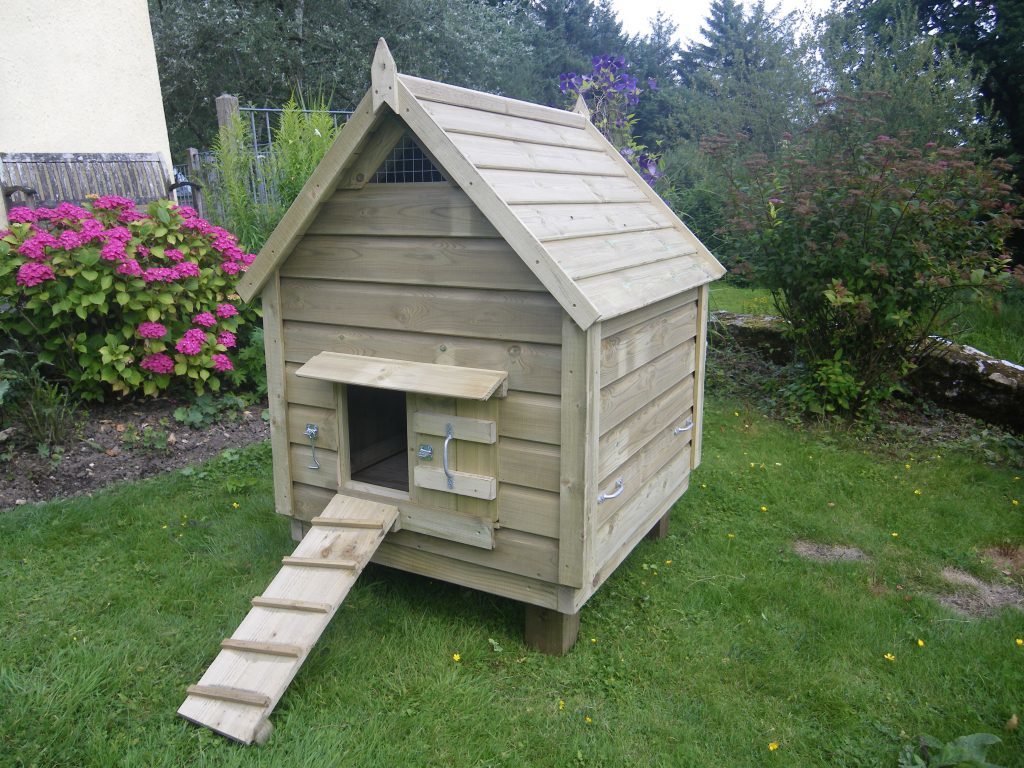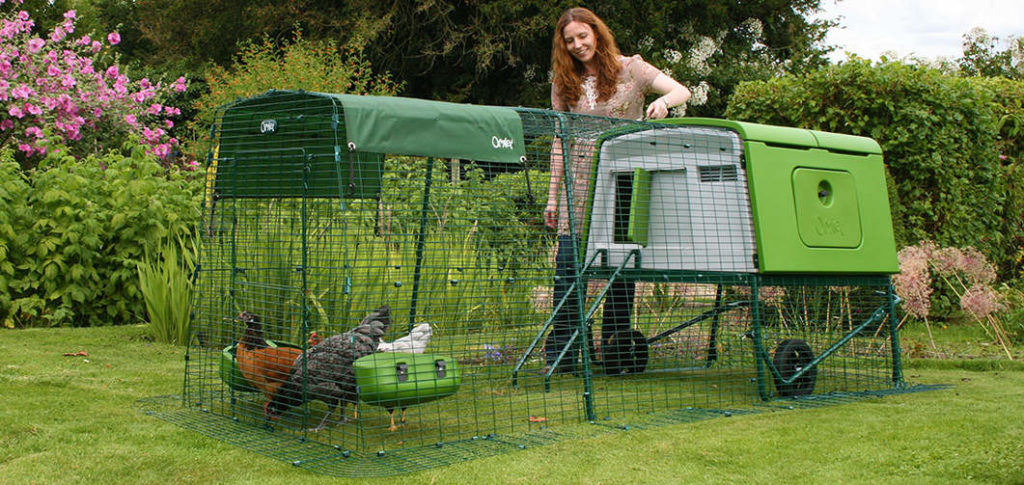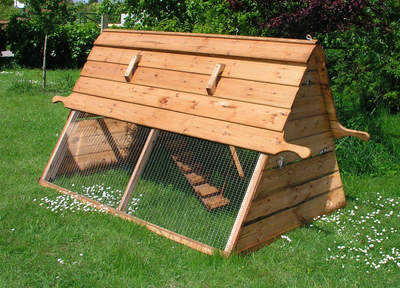Anyone that knows me, knows that I am a big animal lover and would, if I could have an entire zoo collection in my back garden. But whilst I’m not allow to have a pelican or penguin I can have chickens!
Growing up, we kept a few chickens in the vegetable garden (they weren’t allowed in the main garden as Lucy, my childhood dog, would have killed them :/). But it wasn’t until Matthew and I decided to keep them that I realised how much I love them. Now here’s the thing, I must admit I don’t actually like eggs. Well that’s not entirely true, I love a quiche or something along those lines but generally I won’t choose to have a boiled egg and the idea of an egg and cress sandwich is personally my kind of nightmare. So, I wouldn’t blame you for thinking what’s the point in getting chickens, all I can say is one word … CAKE! Fresh eggs make the most amazing cakes and who doesn’t like cake?!
So, not only do they provide a valuable service of fresh eggs they are also a real source of entertainment. Each have their own personalities and I could spend hours watching them pottering about. So, in other words, if you are thinking about it or on the fence I would highly recommend getting some fine feathered friends!
I asked a few weeks ago for any questions via my Instagram and hopefully this blog will answer them all. But if I’ve missed anything you’d like to know please do not hesitate to comment on here or message me! I would also like to add that I am by no means an expert in this field, these are just the bits and bobs that I’ve picked up along the way so please do your research and check out other blogs/books. Final thing, just for clarity some of these links are affiliated.
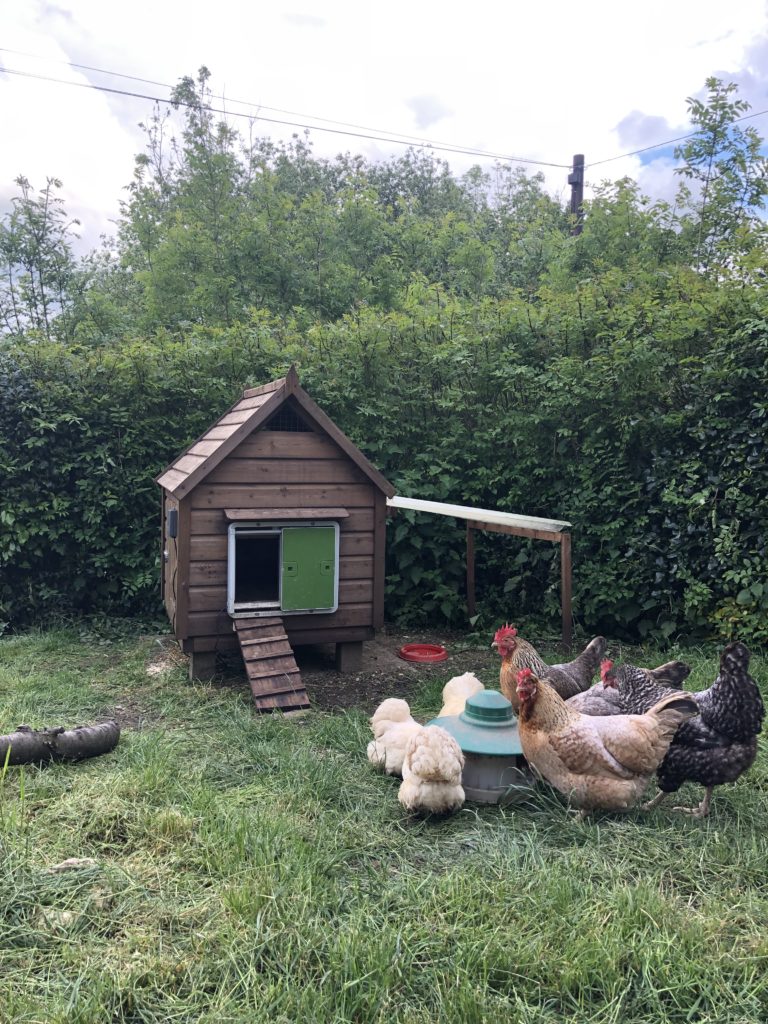
Our Set up
Whilst the previous owners had chickens up at the back of the garden we decided the already fenced off area directly in front of the house was better as we only needed a small space and that way we could see the girls from the window. We got the coop itself from Sunnyfields. In the future, I think I might paint it {any colour suggestions welcome!} but for now it has remained au naturel. We have added bits over time including a small side shelter, automatic door {best buy ever!} and now an inside light as well. On the website, it states that the coop can take 6 birds, we have 7 whoops! However, 3 of these are bantams so half the size of a standard hen.
Where to begin
First things first, if you’re looking or thinking about getting chickens then like any other pet you should first ask yourself, have you got the time, space and money?
Time
Daily, chickens do not require lots of your time although be prepared to be thoroughly distracted by them and spend hours watching them anyway. They of course need to be let out (unless you have an automatic door! See Q&A’s for more info), fed and watered. Weekly, their coop should be cleaned as a build-up of droppings can be bad for their health and I’m sure you wouldn’t like to sleep in a dirty bedroom either. A couple times a year it’s advisable to give your coop a deep clean – I normally do this in spring and late summer when the weathers nice and I can leave everything to dry in the sunlight.
Space
According to most guides you will require around 1sqm per hen (half this per bantam) but the fact of the matter is the more space the better. If you are keeping them in a run I would definitely stick to these guidelines as overcrowding can cause severe stress which can lead to other, worst, issues. If possible letting them free range is perfect but does have some serious downfalls {I’m talking poo here} or may not be possible if predators are a problem in your area. Another option is having a couple of spaces that you can alternate between this way you can let the ground rest.
Money
Apart from the initial set up, keeping chickens is relatively low cost. You can also reduce your set up costs by getting a coop second hand and rescuing chickens rather than buying them. But long term you will have to pay for feed, bedding and vet bills too. If you think that your hens will earn their keep, I wouldn’t bet on it especially as they don’t lay constantly all year. But at the end of the day do your dogs, cats or ponies pay their way? I’m guessing probably not!
Getting Set up
Coop
First things first, you need somewhere for your new feathery friends to live. You’ve googled it and there is a minefield of various shape, sizes, materials and even colours so, what’s best?! There are a few things to consider: how many chickens you want, what sort of look you like and cleaning practicality. Whist the chickens themselves are more interested in ensuring they have separate roosting and nesting spaces (you’ll need around 1 box per 4 hens), sufficient ventilation, insulation, weather proofing and of course security (we’re talking predators here!).
Our coop is of a traditional wooden type which I love for the look of it but should admit is not the best when considering mites (skip to common problems to read all about the arch nemesis of chicken keepers). I haven’t had a plastic coop (like this) but due to there being no nooks and crannies to hide within often mites are less of an issue. Both are generally made to dismantle easily however so they can be cleaned.
Fox proofing
Sometimes as with the circle of life it’s their time, sometimes Mr Fox needs a meal. In any case one of the main things you should be prepared for with chickens is a little heartbreak. You can greatly reduce the chances of an untimely death however by ensuring you chickens are kept safe from predators (that includes your neighbours escaped dog!). We are very lucky in that our chickens can roam free around the garden along with the dogs & cat and *touch wood* they have been okay. But if you know of problems in your area then you might want to consider only letting them roam when you are there to supervise, as well as ensuring their run is fox proofed. There are different ways to do this but most commonly this can be done with some thick fencing and importantly the ends of this should be dug down and buried. This will ensure foxes cannot dig under the fence and gain entry that way.
Feeding
This can be a bit of a minefield with lots of different options available. At the end of the day though, the basic requirement of any laying hen is a good quality layers feed either in mash or pellet form. Our girls have always had pellets but many ex-battery hens will require mash as they have never had pellets before! This feed will provide all the nutrient they need to keep laying. You can then supplement their meals with treats (in moderation!) and fresh fruit and vegetables. *But to note did you know it’s illegal in the UK to feed kitchen scraps unless you are from a vegan household – we give them veg/fruit separate from ours often buying reduced items (more info available from the DEFRA website).
Grit – If you haven’t noticed already chickens don’t have teeth and instead rely on their gizzard to grind food down. Therefore, they need some grit to let this grinding process happen. If free ranging they probably pick grit up naturally but it’s always good a good idea to provide some just in case.
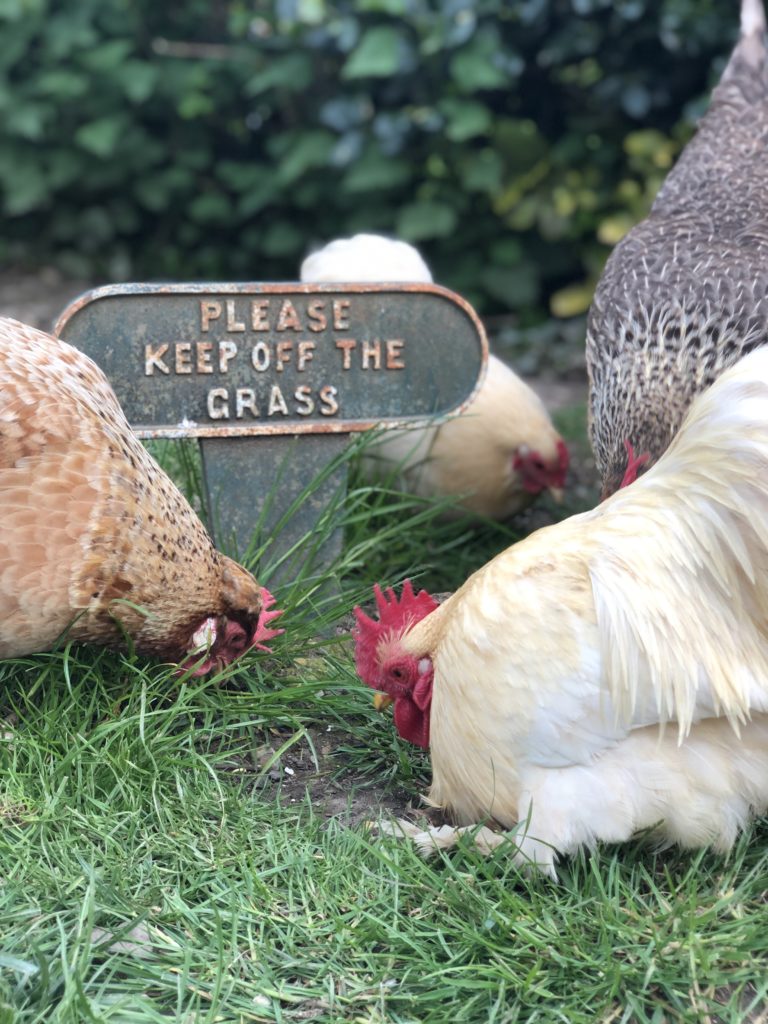
Dust bathing
One thing to consider is providing a dust bath. Yes, chickens bath but instead of jumping in a tub of water like us they prefer to roll around in the dirt. This repels external parasites and I have to admit they always look rather relaxed afterwards. If you’re chickens are free roaming then they’ll probably find a nice place right under (or on top of) your favourite flowers to bath in. We have a mini shelter to keep an area of soil dry throughout the year for them but regardless of this on a nice sunny day the girls will still go and find their own spot somewhere.
Arch Nemesis – Red Mites
Red mites are parasitic mites that live within your coop during the daytime and come out at night for a snack on your chicken’s blood. Disgusting I know – I guess they’re the vampires of the chicken world! All coops can get red mite however wooden ones do seem to suffer the most from infestations. There are lots of products to treat red mite but prevention is always better than cure. You can use a powder like this, which you dust over your chickens (mainly in the summer when red mites are most likely) to be a preventative but regular cleaning of the coop is definitely your best weapon.
*To check for red mites the easiest way is to look at the end of your perches, you can normally see them (they are grey before feeding and red afterwards). To be 100% sure use a paper towel at night along your perch and red streaks will indicate they are in the coop.*
Q&A’s
Some questions I got asked and don’t believe I’ve answered above are here below…
Do they Poo everywhere?
The short answer – yes. Unless you have a fancy new trainable breed of chicken {If so please let me know} chickens will poo everywhere they go. For us this isn’t too much of an issue until summer time when you want to be running around bare feet. So often we restrict their free roaming in summer just using some moveable electric chicken fencing.
Do you get eggs every day?
The amount of eggs you get depends on a few factors including season, health, age and breed.
For bantams, someone once told me they will lay from Valentines to Halloween whilst for more commercial or laying types of breeds that can be longer. Hens will in general need at least 12 hours of daylight to keep producing eggs otherwise their production rate will dwindle if not stop altogether. You can counteract this by providing artificial lighting within your coop if you want to. Thermaland Oaks has written a blog on keeping production high see here. Another time that egg laying will be reduced is when a chicken moults – moulting occurs generally around autumn/early winter but it can vary. Your chickens will look pretty pathetic during this time, as they lose their old feathers and grow new ones. The new plumage will help to keep them warm over winter and should you have a cockerel make them more attractive in Spring.
Whats the one item you couldn’t live without?
By far the best item we have ever brought the girls is their automatic door from Omlet {aff link}. Okay, so its not so much for the pleasure of the girls but makes Matthew and I’s lives a lot easier! You can set the door to open/close using daylight levels as a cue or set it to a specific time. No more fighting who has to get up early out of bed to let them out when they’re fussing at silly o’clock in the summer. On the other hand, we don’t have to panic if we are late back from somewhere knowing the door would have shut to keep them safe – we just check all 7 are inside when we get home. (to note we’ve only ever had one shut out once *touch wood!).
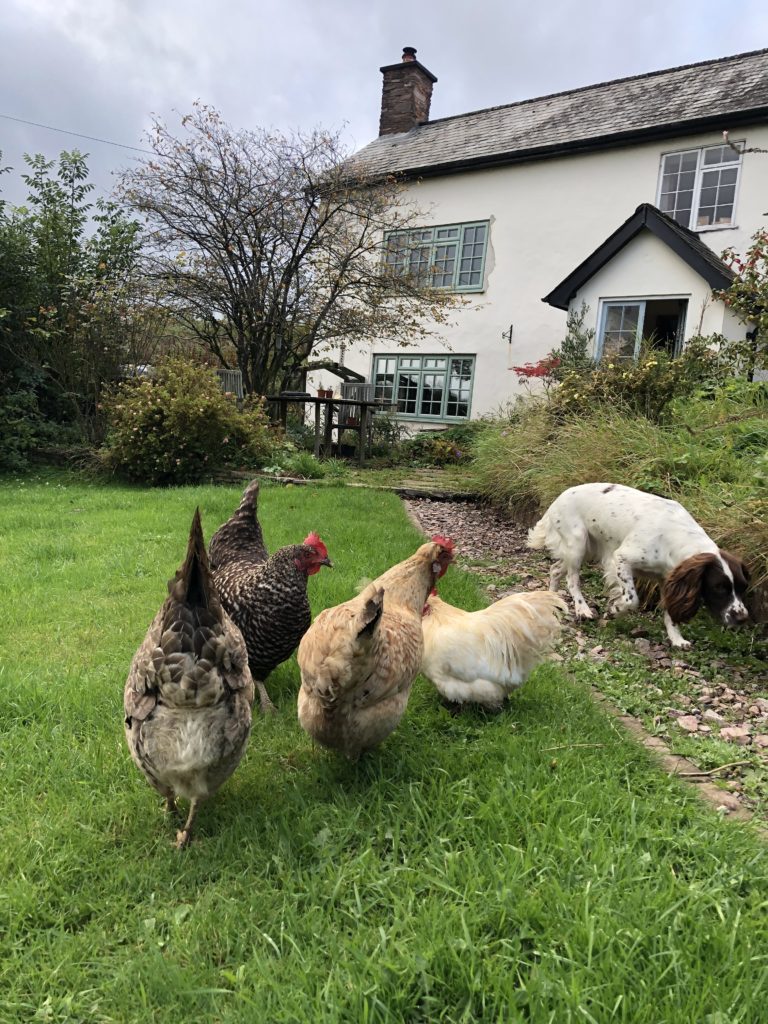
Can other pets and chickens live together?
You’ve heard of weird friendships in animals like a pig and tiger so, there is no reason your pets can’t learn to at least live with, if not love your new additions. We have two springer spaniels and Pumpkin the cat who all manage to get along. In fact, the dogs fear the chickens and yet they wouldn’t hesitate to pick up/kill a pheasant, go figure! But be under no illusion we are very lucky and sometimes that idyllic dream of all your animals meandering around your garden together might be unachievable.
The main thing, as with any new pet introduction, is to take things slowly – we opted to have an electric fence around the chickens to begin with after a couple of zaps the dogs/cat soon realised the girls were protected and learnt to treat that area with respect. We would reward the dogs for ignoring or leaving the chickens alone whilst the cat was more being told off for annoying them. I will say never underestimate an angry chicken … hence the dogs are now scared of them!
This is by no means a comprehensive guide but I hope this helps to get you started!
Yours Daisy x
